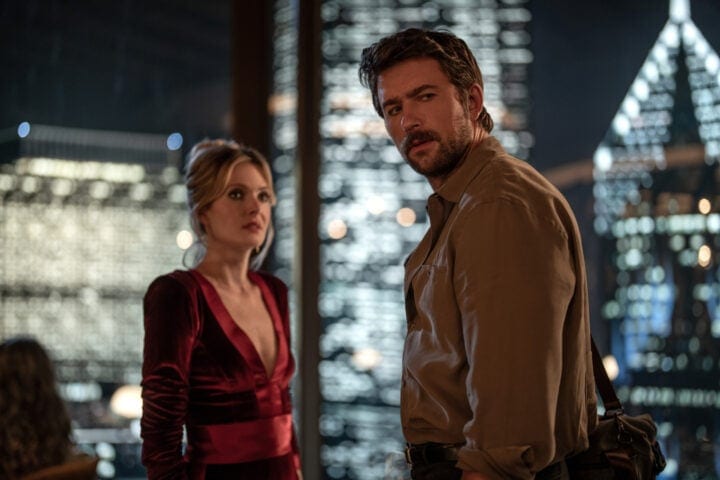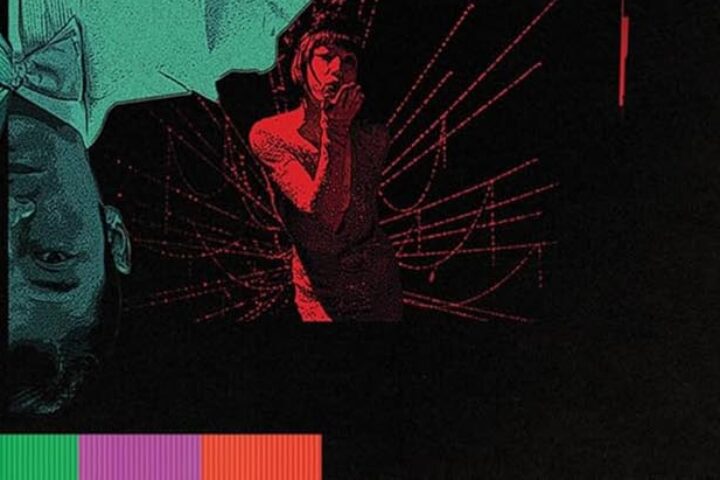“With the advent of CGI,” critic J. Hoberman writes in his 2012 book Film After Film: Or, What Became Of 21st Century Cinema?, “the history of motion pictures was now, in effect, the history of animation.” Rarely has this point been more vividly illustrated than in Roland Emmerich’s slick historical combat epic Midway, in which the eponymous WWII naval battle is depicted with such an abundance of shimmery digital effects that it suggests something out of a photorealistic animated film.
Emmerich, a latter-day heir to the cinema-as-spectacle tradition of Cecil B. DeMille, employs special effects in Midway not to induce a sense of you-are-there verisimilitude, nor to exhilarate audiences with a series of death-defying stunts. Rather, the film’s scenes of combat are more like elaborate paintings, similar in spirit and function to the cycloramas that were such popular attractions at the turn of the 20th century: vast panoramas that compact all the major highlights of a particular event into a single canvas.
Unlike Saving Private Ryan, there’s no attempt here to key the viewer to the chaos and horror of battle. In fact, there’s scarcely any blood to be found in Midway. In addition to the Battle of Midway, the film depicts the bombing of Pearl Harbor, the Doolittle Raid on Tokyo, and other skirmishes in the Pacific during WWII, and these sequences, so bathed in honeyed sunlight, exude a sense of wide-eyed gee-whiz glee: all the fun of battle with none of the icky gore.
Midway is a paean to those brave American soldiers of the greatest generation, one that positions the brave sailors of the U.S. Navy as scrappy underdogs who, after the humiliating surprise attack on Pearl Harbor, make it their mission to avenge themselves on the Japanese. The film studiously avoids acknowledging anything about the era it depicts that might make its target audience (read: white History Channel-watching patriarchs) uncomfortable. Nowhere is this more evident than in its treatment—or, rather, complete non-treatment—of race. Emmerich not only completely sidesteps the issue of racial segregation in the military, black soldiers are completely unseen in the film, despite the fact that many African-Americans served on U.S. ships that fought at Midway, albeit primarily in support roles.
Though most of the film’s characters, a bland succession of largely interchangeable good ol’ boys, are based on real-life historical personages, Wes Tooke’s leaden screenplay renders them all as little more than stock war-movie types. Devil-may-care flyboy Dick Best (Ed Skrein), a ’40s-era twist on Top Gun’s Maverick who gains some maturity when he’s promoted to command his own unit of pilots, is the closest thing that Midway has to a protagonist. Less flashy but similarly righteous is a naval intelligence officer, Edwin Layton (Patrick Wilson), who fights the good fight against the bureaucracy in order to convince the higher-ups that the Japanese plan to attack the Midway atoll. Woody Harrelson also shows up looking tired and slightly lost as Admiral Chester W. Nimitz, while Dennis Quaid is saddled with the role of Vice Admiral Bull Halsey, who’s mostly on hand to attest that shingles are absolutely terrible.
The Americans are all salty, gruff, and jokey, while the Japanese are somber and aphoristic, though both sides share a fondness for speaking in banal clichés. The script never invests us in any of these characters, failing to establish real narrative stakes for any of them. The plot is really little more than perfunctory filler between the battle sequences, which are peppered throughout the film with the regularity of dance numbers in a Rogers and Astaire musical.
Midway is reportedly a longtime passion project for Emmerich, for which he scraped together funds from a number of sources, making it one of the most expensive independent films of all time. (These funders included some Chinese equity firms, which may account for the presence of a completely tangential subplot involving Army Air Forces officer Jimmy Doolittle, played by Aaron Eckhart, bonding with oppressed peasants in Japanese-occupied China). But while Emmerich’s childlike excitement at the whiz-bang action of naval combat is palpable, the film’s battle sequences lack any real suspense or sense of danger. In these moments, Midway suggests old newsreel footage come to life. The film’s veneer may be unmistakably modern, but it’s no less devoted to promoting and flattering a certain idea of heroism, even as it keeps the men inside all those ships and planes at a distance from audiences.
Since 2001, we've brought you uncompromising, candid takes on the world of film, music, television, video games, theater, and more. Independently owned and operated publications like Slant have been hit hard in recent years, but we’re committed to keeping our content free and accessible—meaning no paywalls or fees.
If you like what we do, please consider subscribing to our Patreon or making a donation.






